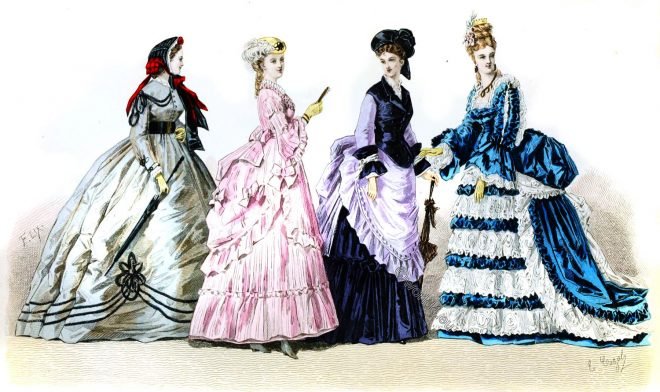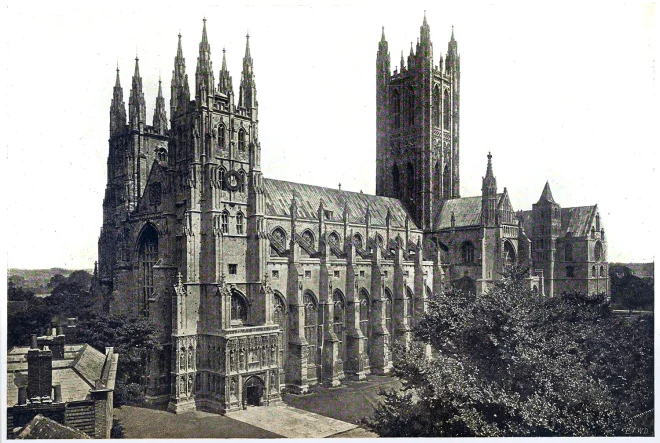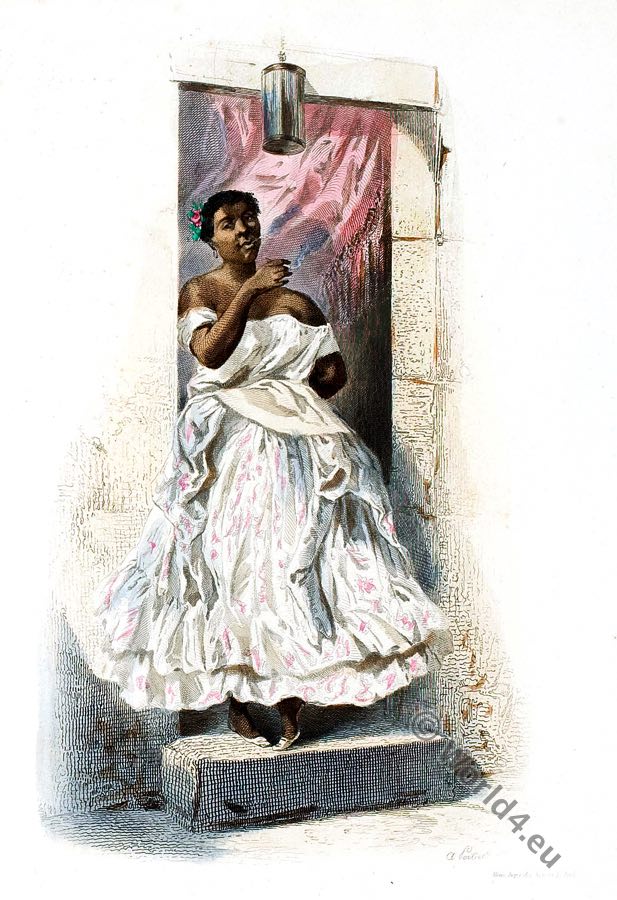Reculver was a village – now a deserted village – about five kilometres east of Herne Bay in the English county of Kent.
Category: 1860
Early Victorian fashion around 1860. Informal afternoon outfit.
Man in striped suit with frock coat, flat hat, lace-up tie and checked waistcoat. The woman wears a voluminous dress, the waist figure accentuated, the skirt supported by a steel frame.
The Fashion of the Crinoline in the Reign of Napoleon III. Empire français.
The Reign of the Crinoline. Petticoats, Cashmere shawls, Pompadour parasols. Dressmakers, like tailors, had begun to deal in ready-made garments.
Eastbourne. Seaside resort on the English Channel.
The bay of Eastbourne is remarkably fine; to the west extends a strong wall rising up to Beachy Head, and crowned with a lighthouse.
Torquay on the south coast of England. Beauty of English scenery.
Torquay is a town on the south coast of England, with exceptional beauty and climate.
Abbotsford, the mansion and estate of Sir Walter Scott in Scotland.
Abbotsford, the well known mansion and estate of Sir Walter Scott, is beautifully situated on the banks of the Tweed, amidst the most enchanting scenery.
Canterbury Cathedral. The ecclesiastical metropolis of England.
The ancient city of Canterbury is chiefly remarkable for its churches, especially for its magnificent Cathedral, which is eight centuries old.
Italy. Folk costumes in the Provinces of Rome and Ancona.
In the surroundings of Rome the picturesque costume of the contadini (farmers) has almost disappeared. Only occasionally do you see entire families of country dwellers in national costumes on the streets.
Free Mulatto of Lima, Peru. Mulâtresse libre.
Free Mulatto of Lima, Peru. Mulâtresse libre, Lima. Source: Le Musée cosmopolite. Costumes actuels de tous les peuples, gravés sur acier par les premiers Graveurs de Paris. Paris, Ancienne Mon… Read More
Mora game in Boulogne. Gambling in public places. Italy 1860.
Morra is a traditional game using the hands, which is known especially in some Mediterranean countries, especially in Italy.










